New evidence revises a long-held belief about James Monroe’s home

WHILE VISITORS TO THE homes of Thomas Jefferson and George Washington are escorted through fine mansions, tourists coming to the Albemarle County, Virginia, home of President James Monroe see a cottage. The modest clapboard house, located on the bucolic estate Monroe called Highland, was billed for more than a century as his family’s main residence for much of his presidency.
To some visitors, the cottage may well have seemed commonplace, and a bit small for the home of a prominent family, headed by a man who stood roughly six feet tall. But for decades, few questions arose. Perhaps that was because Monroe—a Founding Father who fought in the Revolutionary War, a statesman who helped negotiate the Louisiana Purchase, and an enormously popular two-term president—is often perceived as a man of humble origins. His father had been apprenticed to a carpenter, and Monroe has been described as a woodworker’s son and “farm boy” on a “second-tier Virginia farm.” A nineteenth-century etching of Monroe’s boyhood home shows what, to modern eyes, looks like a rough-hewn cabin, reinforcing the impression.
Currently, though, Highland’s cottage is turning out to be a lesson in how a small misunderstanding—or deception— becomes a big one. “Much of colonial history—and the history of buildings—is like plaque building up in your arteries. It just hardens and hardens,” says architectural historian Carl Lounsbury, who worked for decades at Virginia’s Colonial Williamsburg, the eighteenth-century living-history museum. “And sometimes you’ve got to scrape it all away.”
This story is from the {{IssueName}} edition of {{MagazineName}}.
Start your 7-day Magzter GOLD free trial to access thousands of curated premium stories, and 9,000+ magazines and newspapers.
Already a subscriber ? Sign In
This story is from the {{IssueName}} edition of {{MagazineName}}.
Start your 7-day Magzter GOLD free trial to access thousands of curated premium stories, and 9,000+ magazines and newspapers.
Already a subscriber? Sign In
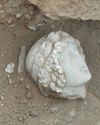
Digs & Discoveries - A Friend For Hercules - Archaeologists discovered a finely carved head depicting Apollo, god of the sun, music, and poetry.
While digging at the crossroads of the two main streets in the ancient city of Philippi in northern Greece, archaeologists discovered a finely carved head depicting Apollo, god of the sun, music, and poetry.
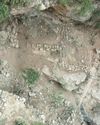
Digs & Discoveries - A Fortress Sanctuary - A sprawling 2,000-year-old fortress in the Zagros Mountains of Iraqi Kurdistan appears to have included a sanctuary dedicated to the ancient Persian water goddess Anahita.
A sprawling 2,000-year-old fortress in the Zagros Mountains of Iraqi Kurdistan appears to have included a sanctuary dedicated to the ancient Persian water goddess Anahita.
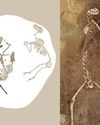
Like Cats And Dogs – Archeologist fund the skeleton of a male Eurasian lynx (Lynx lynx), a notoriously shy creature.
Оn the periphery of Zamárdi, an ancient lakeshore settlement in west-central Hungary, archaeologists uncovered a nearly five-foot-deep beehive-shaped pit with the skeletons of four adult dogs buried in successive shallow layers.
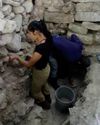
A Dynasty Born In Fire- How an upstart Maya king forged a new social order amid chaos
At the beginning of the Terminal Classic period (ca. A.D. 810-1000), many of the great kingdoms of the southern Maya lowlands-among them Tikal, Palenque, and Calakmul-were being abandoned or collapsing. For many years, scholars have assumed that most, if not all, the other kingdoms across the Maya world must have also been in steep decline.
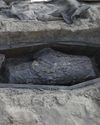
Medical Malfeasance - Archaeologists uncovered two coffins during excavations of a nineteenth-century cemetery in Quebec City that provide evidence of the illicit practice of diverting corpses for the study of human anatomy.
Archaeologists uncovered two coffins during excavations of a nineteenth-century cemetery in Quebec City that provide evidence of the illicit practice of diverting corpses for the study of human anatomy. Starting in 1847, medical students were required to have practical experience studying human anatomy, but legal options to procure cadavers were limited
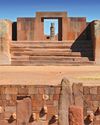
RISE AND FALL OF TIWANAKU
New dating techniques are unraveling the mystery of a sacred Andean city
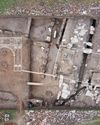
Making a Roman Emperor
A newly discovered monumental arch in Serbia reveals a family's rise to power in the late second century A.D.
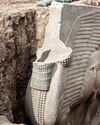
The Assyrian Renaissance
Archaeologists return to Nineveh in northern Iraq, one of the ancient world's grandest imperial capitals

Java's Megalithic Mountain
Across the Indonesian archipelago, people raised immense stones to honor their ancestors
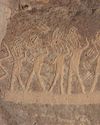
THE SONG IN THE STONE
Located in a desert gorge in southern Peru, Toro Muerto is one of the richest rock art sites in South America. It includes at least 2,600 boulders bearing petroglyphs, many featuring figures known as danzantes who appear to be dancing.